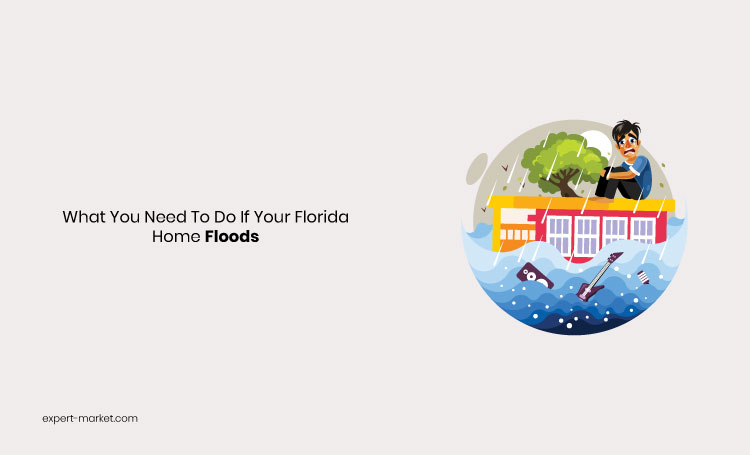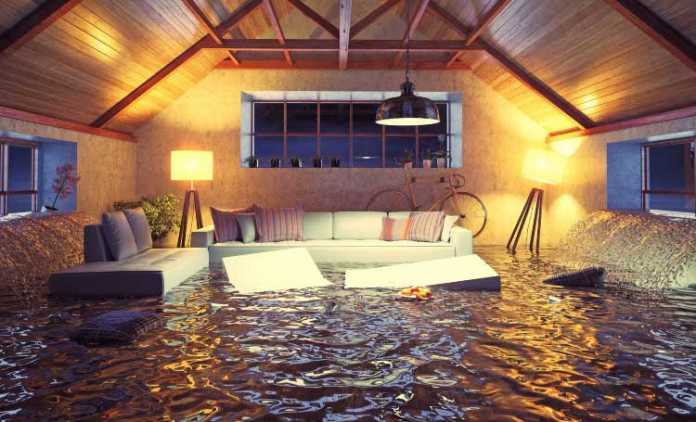Encountering a flood as a homeowner is a devasting and damaging experience, and there are many reasons that could cause your home to flood, such as heavy rains, sewer back-up, malfunctioning sump-pump, and burst pipes. No matter what the cause of the flood is, it’s essential to know what you should do in order to reduce the damage as well as making the clean-up and repair more straightforward.

Safety
The first step when facing a major home disaster is to remain safe. If the flooding is extreme, you may need to leave your home temporarily, and it’s important to stay safe when you return and begin to deal with the aftermath of the flood. If you haven’t already, ensure you have turned to power off and wear protective clothing like gloves and rubber boots when you reenter the property.
Protective clothing is especially important as you may not be dealing with only water when you enter your home; there could be debris or sewage in the water. It is vital to be protected against any items that have been washed in or harmful chemicals. Be sure to throw out all food that has come in contact with the water or been in close proximity as it could be tainted. Thoroughly wash any dinnerware, flatware, or glasses before you use them again.
Stopping Water
When dealing with a flood caused by burst pipes or sump-pumps, your first step is to stop the source of the water. If the problem is with a broken or malfunctioning sump pump, getting a replacement will help with any continuing rains and prevent further damage to your basement, crawl space, garage, or main floor. Making a call to the city to have any debris removed from storm drains will also help stop the flooding.
If the flooding is being caused by a burst pipe, it is crucial to fix the plumbing as soon as possible to reduce the water damage. Once you have stopped the flooding, you will need to remove the water from your home and dry the areas affected to assess the level of damage.
Clean-up & Repairs
Once the water is gone, it’s time to clean up the house and assess how bad the water damage is and whether you need a professional cleaning crew. You may need to remove drywall, insulation, or flooring to prevent mildew and mold from spreading throughout your home, and if the flooding was widespread, you might need to throw out the damaged furniture.
If you remove the water and begin drying quickly, this will reduce the likelihood of mold. Still, when it comes to water damage, a professional company such as DryMetrics can assess the damage and handle the water damage restoration in Florida homes.
Insurance
Most homeowners insurance policies cover flooding due to storms, backed-up storm drains and sewers, burst pipes, and broken sump pumps. However, every insurance company is different, and it’s essential to look at your policy details first before you attempt to claim. Once you know where you stand with your insurer, they will be able to send out an adjuster to assess the damage and determine if it is covered as part of the policy.
































